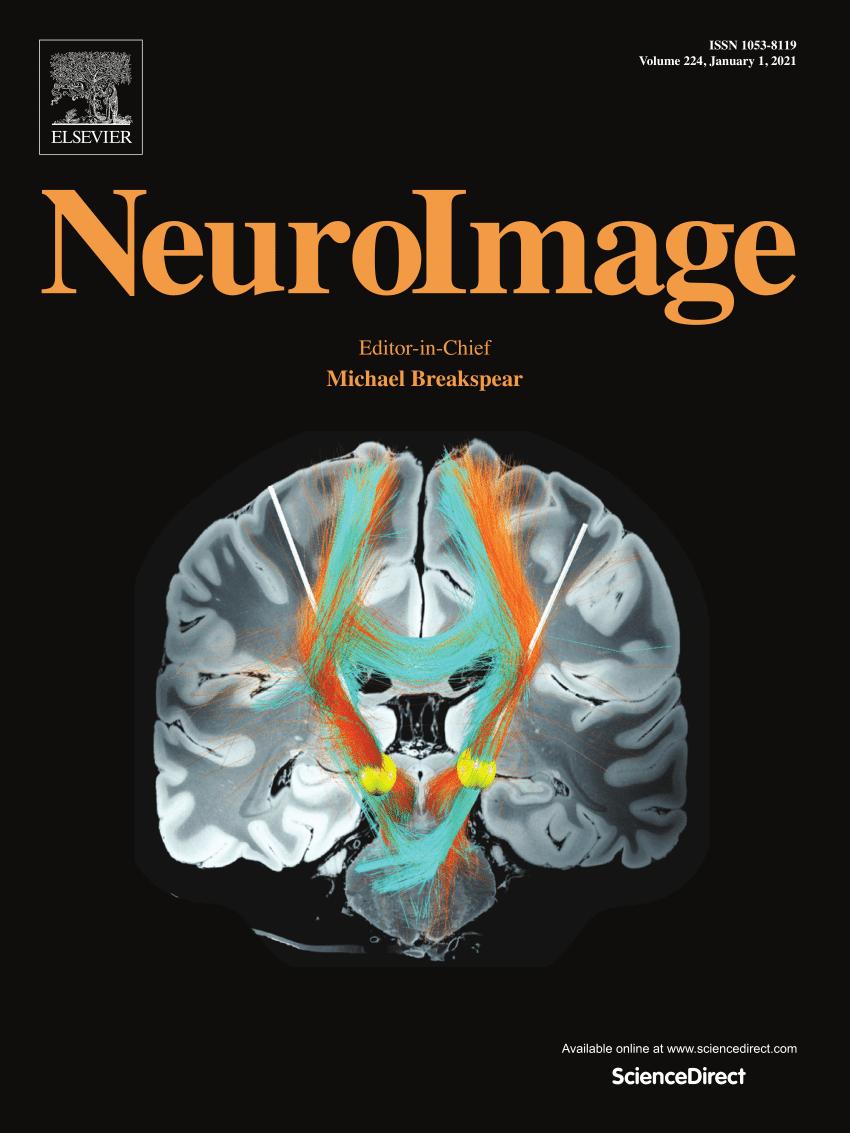Multimodal personalization of transcranial direct current stimulation for modulation of sensorimotor integration
IF 4.5
2区 医学
Q1 NEUROIMAGING
引用次数: 0
Abstract
Transcranial direct current stimulation (tDCS) for the modulation of smooth pursuit eye movements provides an ideal model for investigating sensorimotor integration. Within neural networks subserving smooth pursuit, visual area V5 is a core hub where visual motion information is integrated with oculomotor control. Here, we applied personalized tDCS explicitly targeting individual V5 in healthy human participants using algorithmic optimization informed by functional magnetic resonance imaging and combined electro- and magnetoencephalography. We hypothesized subtle modulation of sensorimotor integration during pursuit and assessed the effects of personalized anodal and cathodal tDCS targeting V5 compared to (a) sham stimulation, (b) personalized tDCS targeting the frontal eye field (FEF), and (c) conventional normative tDCS over V5. We found pursuit initiation specifically delayed during personalized cathodal tDCS targeting right V5 suggesting the involvement of distinct functional subregions of V5 in initial sensorimotor integration of visual motion information during pursuit eye movements. Results were extensively controlled by anodal and sham tDCS, different pursuit tasks, and finite-element simulations of individual electric fields. Importantly, in contrast to the two control experiments (personalized tDCS targeting FEF and normative tDCS over V5) personalized tDCS targeting V5 effectively modulated pursuit by adapting electric fields to individual anatomical and functional V5 properties. Our results provide evidence for the ability of personalized tDCS targeting V5 to introduce targeted subtle modulation of sensorimotor integration, specifically during smooth pursuit initiation. Further, our results indicate the potential of personalized tDCS to alter behavior as the main aspect of interest in human neuromodulation.
多模态个体化经颅直流电刺激对感觉运动整合的调节。
经颅直流电刺激(tDCS)对平滑追求眼动的调节为研究感觉运动整合提供了理想的模型。在平滑追踪神经网络中,视觉区域V5是视觉运动信息与眼动控制相结合的核心枢纽。在这里,我们应用个性化的tDCS明确针对健康人类参与者的个体V5,使用算法优化,由功能磁共振成像和脑电和脑磁图联合提供信息。我们假设了追求过程中感觉运动整合的微妙调节,并评估了针对V5的个性化阳极和阴极tDCS与(a)假刺激、(b)针对额叶视野(FEF)的个性化tDCS和(c)针对V5的常规规范tDCS的效果。我们发现,在针对右V5的个性化阴极tDCS过程中,追求启动特别延迟,这表明在追求眼运动过程中,V5的不同功能亚区参与了视觉运动信息的初始感觉运动整合。结果通过阳极和假tDCS、不同的追踪任务和单个电场的有限元模拟进行了广泛的控制。重要的是,与两个控制实验(针对FEF的个性化tDCS和超过V5的规范tDCS)相比,针对V5的个性化tDCS通过调整电场来适应个体解剖和功能V5特性,有效地调节了追踪。我们的研究结果为个性化tDCS靶向V5的能力提供了证据,以引入有针对性的细微调节感觉运动整合,特别是在平滑追求启动过程中。此外,我们的结果表明,个性化tDCS改变行为的潜力是人类神经调节的主要兴趣方面。
本文章由计算机程序翻译,如有差异,请以英文原文为准。
求助全文
约1分钟内获得全文
求助全文
来源期刊

NeuroImage
医学-核医学
CiteScore
11.30
自引率
10.50%
发文量
809
审稿时长
63 days
期刊介绍:
NeuroImage, a Journal of Brain Function provides a vehicle for communicating important advances in acquiring, analyzing, and modelling neuroimaging data and in applying these techniques to the study of structure-function and brain-behavior relationships. Though the emphasis is on the macroscopic level of human brain organization, meso-and microscopic neuroimaging across all species will be considered if informative for understanding the aforementioned relationships.
 求助内容:
求助内容: 应助结果提醒方式:
应助结果提醒方式:


